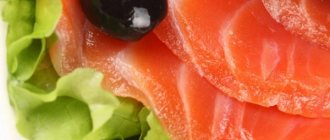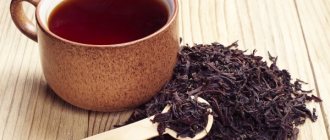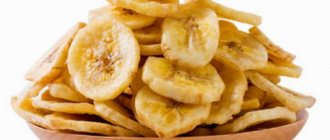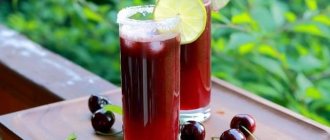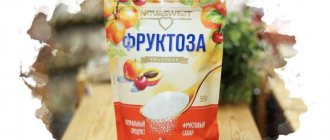Natural cane sugar is included in the list of dietary sources of carbohydrates. It has been obtained from sugar cane since ancient times in India, from where it spread throughout the globe thanks to merchants and conquerors. In Russia, the benefits and harms of cane sugar have not been studied for a long time. Now it is gaining more and more popularity among adherents of proper nutrition. It is believed that it has much more beneficial properties and causes much less harm than its beet counterpart.
What is the difference between cane sugar and regular sugar?
Unlike beetroot, cane contains 20 times more potassium, 10 times more iron and as much as 85 times more calcium. The composition also contains magnesium, which is necessary for the body, which is not present at all in beets, and the amount of copper is almost the same as in oysters!
Cane sugar contains B vitamins, which improve metabolism and ensure the normal functioning of the entire body.
The difference is noticeable even in culinary terms. Cane sugar has the taste and color of caramel, which true gourmets appreciate. Dishes acquire a refined and delicate caramel flavor and aroma. They especially highlight the taste of drinks and sauces.
The brown color is due to the presence of molasses (black molasses), which is a source of useful microelements and even proteins. The darker the color, the more molasses it contains and the more beneficial the properties. In this regard, black cane sugar is especially popular.
Both varieties have almost the same energy value (about 400 kcal), however, the beet variety loses to the cane variety, which supplies unique beneficial substances. The latter, among other things, refers to slow carbohydrates and does not cause significant harm: in this case it is impossible to gain weight or get an overdose of glucose.
Which sugar is sweeter: cane or beet sugar?
It is believed that cane sugar is sweeter than beet sugar. However, according to GOST, any sweetener produced in factories consists almost entirely of sucrose, which determines the degree of sweetness.
Apart from the differences in the content of useful components, the composition of both options is the same. The only difference is the area of their contact with the taste buds. Cane sweetener crystals are larger in size, which makes it taste sweeter when you put it in your mouth. But if you dissolve it in tea or coffee, the degree of sweetness will be the same as regular one.
Sugar contraindications
Although the product is hypoallergenic, it may cause intolerance in some people. It is contraindicated for them. It is not advisable to eat cane sugar if you have diabetes, despite the fact that it is a slow carbohydrate. The use of the product is contraindicated in acute pancreatitis.
Abuse of sweets is accompanied by harm to health. Regularly exceeding the permissible daily norm leads to weight gain. In people with a predisposition to diabetes, the abuse of sweets gives impetus to the onset of the disease.
In addition to the topic, watch the program about health:
Types of cane sugar
In order to choose cane sugar, you need to know the manufacturing process and the differences between the varieties of this source of carbohydrates.
Based on the manufacturing principle, they are distinguished:
- Refined (white), that is, it has undergone a refining procedure: turning into syrup, filtration, evaporation and drying.
- Unrefined (brown), that is, practically unrefined. This is the type that is most often consumed, because the benefits of unrefined cane sugar are explained by the high content of molasses.
Types of Brown Sugar:
- Muscovado sugar: has a distinct caramel aroma, honey color and slightly moist, sticky medium-sized crystals, native to South America and Mauritius.
- Demerara sugar: has hard and sticky crystals of golden shades, grows in South America and is called the Demerara River, as it began to come to the world market from this area.
- Black cane (Soft molasses sugar): contains a large amount of molasses and is very dark in color, has the softest and stickiest crystals, and a rich cane flavor and aroma.
- Turbinado sugar: Turbinado sugar: turbine or centrifuge processed with water and steam to remove impurities and contaminants, has dry, large crystals ranging from honey to brown in color and comes primarily from Hawaii.
- Gur: a special type that came from India, is condensed sugarcane juice, which is squeezed out very slowly and retains its beneficial properties; in color and consistency it is similar to soft sherbet.
We recommend reading: Lemon peel: benefits and harms, can you eat it?
What is brown sugar
What are the benefits and harms of cane sugar for the body?
60% of all sugar produced in the world comes from cane stems grown in India, Central and South America. It belongs to the perennial herbs.
Cane sugar that has not been refined has a brown color. This semi-finished product contains one of the pressing fractions - molasses or black molasses. It not only colors the crystals in a characteristic golden-brown color, but also gives it an original caramel taste.
The aroma of molasses lingers in baked goods and confectionery. For this quality, unrefined sugar has long been of professional interest to culinary specialists. Adding it to a cup of coffee adds a sophisticated touch to the usual drink.
But the main advantage of the product is the increased content of mineral ingredients.
Composition and calorie content of cane sugar
This type of sugar is an excellent calorizer that will not cause much harm to your figure. It contains a significant proportion of microelements and vitamins with valuable properties. In terms of the content of calcium, magnesium, iron, phosphorus and zinc, it surpasses all similar products, so its benefits cannot be overestimated. For example, in Western countries, dark sugar is used by vegetarians as a source of iron and magnesium.
Energy value:
- proteins ≈ 0.70 g;
- fats – 0 g;
- carbohydrates ≈ 96 g.
Cane sugar contains slightly fewer calories than regular sugar. The calorie content of one hundred grams is 377–398 kcal.
Benefits of Brown Cane Sugar
Dark cane sweetener supplies carbohydrates that are necessary for the synthesis of special hormones, without which most biological processes cannot proceed normally. In addition to carbohydrates, it supplies the body with B vitamins and a host of important microelements that bring enormous health benefits. In total, it contains about two hundred useful substances, thanks to the properties of which:
- the brain and nervous system function better;
- blood pressure is normalized;
- bones and joints are strengthened;
- metabolism improves and is regulated;
- strength and energy appear;
- toxins are removed from tissues;
- digestion improves;
- the work of the liver and spleen is stimulated;
- the functioning of the cardiovascular system is stabilized.
Among other things, cane sugar can also be consumed in moderation when losing weight, since the beneficial components included in the composition are transformed into energy without turning into fatty compounds. Thus, it can be included in the menu of any diet and sports nutrition. Another plus: it does not cause allergic reactions, so cane sugar will definitely not harm even children. But if the child has any diseases, you must first consult a doctor.
Beneficial features
Cane sugar exhibits beneficial properties for humans due to the following:
- B vitamins;
- minerals: sodium, calcium, phosphorus, zinc, iron, sodium.
Subject to dosed consumption, the product has a calming effect on the nervous system, improves mood and memory, and has a mild sedative effect.
As a source of carbohydrates, it provides energy and improves performance. The minerals in sugar help strengthen the skeletal system, normalize blood pressure and heart function.
Moreover, sugar improves immunity, reduces the risk of infections, and reduces cough and sore throat.
Is there any benefit to refined cane sugar?
Many people believe that refined sugar is produced using chemicals, but this is not true. The process uses only water and special raw materials.
In terms of calorie content and sucrose content, refined and unrefined cane sugar practically do not differ from each other (maximum by 10 kcal). The main difference is only in the content of useful elements, which are much less in the refined version due to processing. However, a small part of them remains.
Important! It is better not to consume cane products that come from Southeast Asia and have not undergone the refining process, since in these countries they control pests with the help of special poisons, which then remain in the product.
Features of sugar consumption
If you completely stop eating sweets, blood circulation will be disrupted, and at the same time the normal functioning of most body systems. This means that sugar must be in the diet. It is only important to choose the right type of cane sweetener and follow the dosage.
Daily consumption rate
An adequate dosage per day is approximately 45 grams. In this case, no diet will be disrupted. You can consume up to six tablespoons of this substance per day, so you don’t have to give up sweets.
Is it possible to have cane sugar for diabetes?
In mild stages of diabetes, it is allowed to consume a small amount of sweets, which are prescribed by a doctor. In general, this amounts to about 5% of your daily carbohydrate intake. It is necessary to be careful about the volume consumed and take into account the composition when dosing drugs that lower blood sugar levels. At the same time, you can include only high-quality varieties in your diet and be able to distinguish them from harmful counterfeits.
For type 1 and type 2 diabetes, it is better to avoid consuming this product, since the glycemic index of cane sugar is quite high and amounts to 55 units. This increases glucose levels and the proportion of carbohydrates in the body. In such cases, it is better to give preference to sweeteners.
We recommend reading: What are the benefits of yeast-free bread and how to bake it
Cane sugar for pancreatitis
If inflammatory processes occur in the digestive organs, you should be careful about consuming any sweets and monitor the dosage in moderation. For pancreatitis, doctors recommend adding just one teaspoon of cane sugar to drinks, but it is better to avoid the treat altogether during the illness.
Cane sugar during pregnancy and breastfeeding
During pregnancy, it is recommended to replace regular sugar with cane sugar, as it contains elements necessary for mother and child and is well absorbed. In addition, it can improve lactation and the taste of milk, help cope with insomnia and promote rapid recovery after childbirth and the production of the happiness hormone. However, the calorie content here is no lower than usual, which means you should reduce your consumption to three spoons a day, because pregnant and lactating women are prone to obesity.
How many calories are in sweetener? Comparison of calories from simple sugar and sweeteners
Sweeteners of natural origin, compared to regular sugar, can have varying degrees of sweetness and calorie content. For example, fructose is much sweeter than simple sugar.
So how many calories does this sugar substitute contain? Fructose contains 375 kcal per 100 grams. Xylitol can also be used as a sweetener, because it is quite sweet, and its calorie content is 367 kcal per 100 g.
How many calories are in sorbitol? Its energy value is 354 kcal per 100g, and its sweetness is half that of regular sugar.
Note! The calorie content of regular sugar is 399 kcal per 100 grams.
A sweetener of synthetic origin has a low calorie content, but it is much sweeter than simple sugar at 30, 200 and 450. Consequently, a natural sugar substitute contributes to the gain of extra pounds, because. it is a high-calorie product.
Although in reality the situation is the opposite. Synthetic sugar affects the taste buds, so blood glucose levels do not increase.
But it turns out that after consuming artificial sugar, the body cannot be satisfied for a long time, which means that ordinary natural sugar saturates much faster.
It turns out that a diabetic does not need to know how many calories are in a particular sweetener, because much more products containing a non-calorie synthetic sugar substitute are eaten.
Eating such food lasts until the walls of the stomach stretch, signaling satiety, as a result of which the body feels full.
Thus, a sweetener, like natural sugar, promotes weight gain.
Cane sugar scrub for beautiful skin
Brown sugar is the best option for making scrubs. It has a delicate effect on the skin surface, and the pleasant caramel aroma can relax.
Scrubs with the addition of this component have a lot of useful properties.
- Normalizes skin fat metabolism.
- Eliminates peeling.
- Moisturize.
- Cleanses pores.
- Fight cellulite.
- Rejuvenate and smooth.
- Removes toxins.
- Evens out complexion.
- Dead cells are removed.
- Used for massage.
- Gives shine.
- Suitable for use before shaving to prevent ingrown hairs.
- Makes the skin more soft.
- Absorb excess fat.
- Maintains the natural balance of the skin.
In addition to the described component, the scrub consists of a base (honey, oil, cream) and a couple of drops of essential oil (optional), which give the product additional beneficial properties.
Cane Sugar Scrub Recipes
- Mix 3 tbsp. l. olive oil, 1 tbsp. l. vanilla extract and vitamin E, 2 tsp. natural honey and 2 tbsp. l. cane sweetener.
- Mix 2 tbsp. l. white and brown sugar, 1 tbsp. l. sea salt, 1/3 cup baby oil.
- Mix cane sugar and honey in a 1:1 ratio, add a little lemon juice.
Advice! Before applying the scrub, you should steam your skin. Then massage it with the resulting product for 10 minutes, rinse with warm water and apply cream.
Unusual uses
Sugar can be used for more than just improving the taste of drinks and baked goods. In Sweden, for example, it is used as a unique spice. Everyone's favorite liver pate and pickled herring are prepared by Swedish chefs using cane sugar. It is also added to various sauces, soups and cold dishes.
In cosmetology, the properties of cane sugar for moisturizing, cleansing and whitening the skin are known. For example, you can prepare a face mask that has an instant effect. To do this, you will need a few tablespoons of fresh milk, a couple of drops of olive oil, and 1-2 tablespoons of unrefined sugar. By applying the finished composition to the skin and leaving it for 5 minutes, you will be surprised to discover how the skin will become more beautiful and silky.
Natural brown sugar is a unique product, the properties of which science is just beginning to reveal. Therefore, replacing the traditional beetroot sweetener with it is the only correct solution that will fill the body with rare vitamins and minerals.
How to distinguish real cane sugar from fake
Counterfeits are increasingly appearing in stores. Manufacturers add caramel to regular refined sugar to turn it brown and sell it at the price of natural cane sugar.
It is important to learn to recognize a fake. To do this, you need to take into account several nuances:
- The packaging should be marked “unrefined.”
- Manufacturers of this product can only be the USA, Mauritius and South American countries.
- Due to the different sizes of crystals, this substance cannot be in the form of perfectly smooth sand or cubes.
Ways to recognize a quality product:
- Drop a little iodine into sweetened water. If the liquid turns blue, then the product being tested is real.
- Dissolve sugar in water. If it turns brownish, then it is a fake.
How to choose and distinguish a fake?
In an effort to make money, dishonest sellers, under the guise of a rare type of sugar, sell a caramel-colored ordinary refined white product.
What should you consider when choosing? The authenticity of cane sugar is verified by:
- Appearance. Sugar crystals should have different shapes, they are heterogeneous in structure, sticky or wet. If the sweet grains of sand are too crumbly or, on the contrary, have the appearance of an unformed brown substance, we can most likely talk about a fake.
- Country of origin. This clearly indicates the authenticity of the sugar. It must be imported into our country, since it is impossible to manufacture it here. The place of manufacture must be the USA, South America or Mauritius.
- Product form. The product must be sold in crumbly form and cannot be formed into briquettes or look like uniform dry sand.
- The smell. Once you taste natural sugar, you can easily distinguish it by its sweet, unusual aroma.
Harm of cane sugar and contraindications
In some cases, cane sugar can be not only beneficial, but also harmful to health. This is due to the fairly high calorie content. If you consume sweets in large quantities, the risk of diseases such as diabetes, cancer and atherosclerosis increases, as well as diseases of the pancreas, which cannot process as much. In addition, sweets cause tooth decay.
Advice! Those with a sweet tooth who cannot refuse this pleasant taste are recommended to consume fruits and dried fruits, high-quality honey and natural cane juice.
How do they do it?
Sugar production begins with the cultivation of cane. The plant is best cultivated in countries with hot climates and high rainfall. The cane harvest is harvested by hand, the stems are cut into pieces and quickly transported to the factory.
In production, sugar is extracted from cane by diffusion, and the juice is purified and heated to kill bacteria. The liquid syrup, passing through several evaporators, crystallizes and forms the familiar small grains of sand. Molasses, which coats sugar, is a by-product but an integral product of sugar production.
